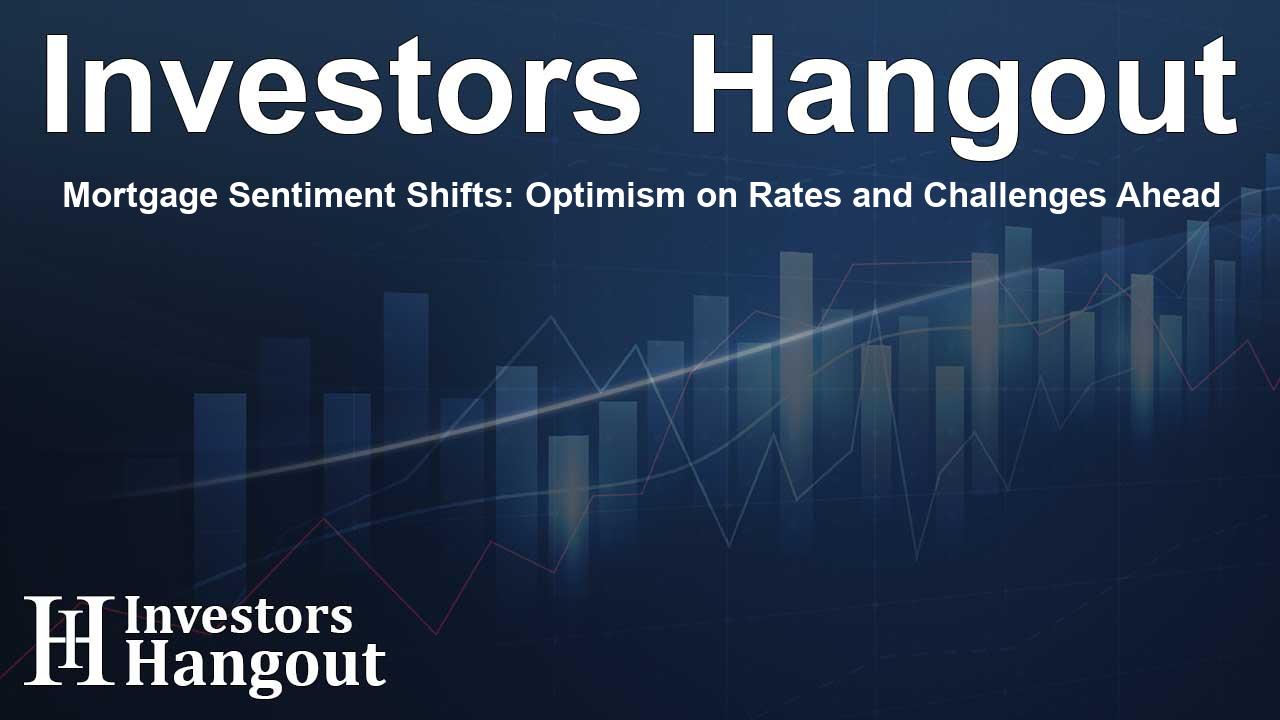Mortgage Sentiment Shifts: Optimism on Rates and Challenges Ahead

Understanding the Shift in Mortgage Sentiment
Consumer sentiment about the housing market often shows a complex interplay of optimism and concern. With recent data highlighting a rise in mortgage rate optimism, it's crucial to unpack what this means for homebuyers and sellers alike.
Regional Differences in Buyer Sentiment
The recent report from Fannie Mae sheds light on shifts in expectations regarding the real estate market. While optimism about mortgage rates increased, many remain skeptical, especially regarding homebuying conditions. A notable regional divergence indicates varying consumer sentiments across U.S. states, likely driven by local market dynamics and housing supply levels.
According to the Home Purchase Sentiment Index (HPSI), optimism about the future of mortgage rates rose by 0.6 points, placing the index at 72.1. This increase is fueled by a substantial percentage of consumers—39%—believing rates will decline in the next year, compared to just 29% in the previous month. However, despite this optimistic outlook on mortgage rates, homebuying sentiment remained largely stagnant.
Pessimism Surrounding Home Buying
Only 17% of consumers currently believe it’s a good time to buy a home, a figure that reflects enduring concerns over affordability and availability. While the majority—65%—view selling favorable, the split between regions is stark. Buyers in regions with higher home inventory tend to express greater willingness to sell, revealing an interesting trend that may influence future transactions.
Impact of Home Prices and Economic Factors
The expectation surrounding home prices showcases a shift: while 37% believe prices will increase, 25% anticipate a decrease. This represents a meaningful change in consumer perspective, especially as historical data shows rising prices generally deterring potential buyers. The prevailing wariness is attributed to job uncertainty and household income fluctuations, with job loss concerns only slightly decreasing as more respondents feel secure in their employment.
Insights from Fannie Mae's Research
Mark Palim, Fannie Mae Vice President and Deputy Chief Economist, emphasized that while there's slight uptick in optimism regarding mortgage rates, the overall buyer sentiment does not reflect this positivity. Various factors, including regional differences in housing supply, highlight the various challenges and opportunities within the market.
The Lock-In Effect and Its Implications
The phenomenon known as the 'lock-in effect,' where potential sellers are hesitant to move due to low mortgage rates on their current homes, continues to play a critical role in suppressing housing inventory. Nevertheless, as mortgage rates begin to fall, experts predict an increase in home listings, which could alleviate some buyer concerns.
Future Outlook for the Housing Market
As consumer sentiment shifts, those considering a home purchase in the coming years should remain vigilant. Organizations like Fannie Mae are dedicated to providing ongoing research that informs housing-related decisions. With 25% of respondents in the recent survey contemplating a purchase within three years, it remains to be seen how market dynamics will evolve.
Summarizing the HPSI Findings
The Fannie Mae Home Purchase Sentiment Index indicates intriguing insights about the future of the housing landscape. Increased mortgage optimism contrasts with cautious homebuying sentiments, highlighting the complexity of decision-making in this sector. As consumers navigate this shifting landscape, staying informed is essential to making decisions aligned with their long-term housing goals.
Frequently Asked Questions
What does an increase in the Home Purchase Sentiment Index mean?
An increase in the HPSI indicates a more favorable view of the housing market among consumers, particularly regarding expectations for mortgage rates and home prices.
How do regional differences affect homebuying sentiment?
Regional differences can significantly impact consumer sentiment based on local market dynamics, including supply and demand levels, which affect both buying and selling perspectives.
What factors contribute to the lock-in effect?
The lock-in effect arises when existing homeowners hesitate to sell due to low mortgage rates on their current loans, which can limit housing supply and impact market dynamics.
Why do consumers remain pessimistic about homebuying?
Even with optimistic views on mortgage rates, many consumers remain cautious due to affordability issues, economic uncertainties, and fluctuating home prices.
What does the future hold for the housing market?
While current sentiments reflect mixed feelings, factors like changing mortgage rates and increased listings may influence both buyer and seller behaviors in the near future.
About Investors Hangout
Investors Hangout is a leading online stock forum for financial discussion and learning, offering a wide range of free tools and resources. It draws in traders of all levels, who exchange market knowledge, investigate trading tactics, and keep an eye on industry developments in real time. Featuring financial articles, stock message boards, quotes, charts, company profiles, and live news updates. Through cooperative learning and a wealth of informational resources, it helps users from novices creating their first portfolios to experts honing their techniques. Join Investors Hangout today: https://investorshangout.com/
Disclaimer: The content of this article is solely for general informational purposes only; it does not represent legal, financial, or investment advice. Investors Hangout does not offer financial advice; the author is not a licensed financial advisor. Consult a qualified advisor before making any financial or investment decisions based on this article. The author's interpretation of publicly available data shapes the opinions presented here; as a result, they should not be taken as advice to purchase, sell, or hold any securities mentioned or any other investments. The author does not guarantee the accuracy, completeness, or timeliness of any material, providing it "as is." Information and market conditions may change; past performance is not indicative of future outcomes. If any of the material offered here is inaccurate, please contact us for corrections.